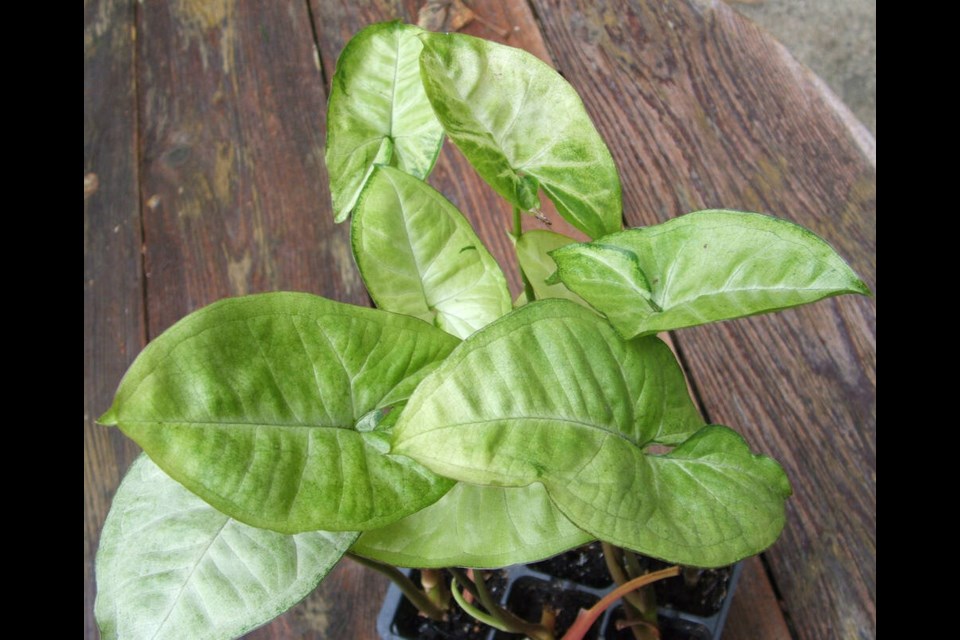Dear Helen: Early in the summer, a friend gave me a Dracaena with three slim, tall stems. I kept the plant on my lightly shaded, sheltered patio until late October, when I brought it into the warmth of my home. It soon began dropping leaves and some of the remaining leaves have developed brown leaf tips. I tried spray-misting, and new leaves are unfurling from the centres of the rather scrawny leaf tufts. Do you think the plant will make it through the winter? Are there other ways to renew the plant or to propagate it?
M.H.
It is not unusual for tropical foliage house plants to drop a few leaves when they are brought back indoors in late summer, but a plant left outdoors as the weather cools in early autumn will suffer fairly severe shock from being moved abruptly from cold to warm temperatures. An alarming number of leaves will drop.
A general rule is to bring house plants indoors before overnight temperatures outdoors drop much below what they are in the house. Late summer this year presented a particular challenge. Instead of the usual, very gradual cooling in the weather, it seemed as though we plunged directly from summer into fall with unusually cool overnight temperatures arriving far earlier than we are used to.
New leaves sprouting in the tufts of foliage atop the long stems is a hopeful sign. Moderate warmth, bright indirect light, and the extra humidity from misting will all help to keep the plant in reasonable shape over the winter. It will help to prevent leaf tip trying as well. The best timing for misting is early in the day. Sending a plant with dampened foliage into the night can invite problems.
Keep the soil moist, but water less than you did in summer. Poke a finger into the soil to asses moisture levels.
The dry, hot air in many homes, together with low light levels, can be hard on house plants, but the conditions rarely kill the plants. In fact I can think of homes I’m familiar with where potted plants put on sumptuous growth, flower, and generally thrive in winter. They all have spaces at bright windows, where temperatures are comfortably warm but not torrid.
From your description, the plant is most likely Dracaena marginata. It is usual for these plants to drop their lower leaves over time, leaving bare stems that can be quite attractive. Sometimes they take on interesting shapes.
Any pruning and/or propagation is best done in spring or early summer. If you would like foliage close to soil level, to complement the remaining bare stems, cut the weakest or least attractive stem to just above the soil line. The cut will sprout to form a new plant.
The tip growth can be removed and rooted. Pull or clip away the outer leaves and insert the tuft into a hole pre-made into a lightweight, sterile potting mix. Water lightly, around the pot rim and away from the cutting stem, and provide a loose, clear plastic “humidity tent” over and around the cutting for the rooting period. Remove the cover regularly to introduce fresh air. New growth on the cutting will indicate tooting has occurred.
Dear Helen: What is “lamb’s lettuce”?
S.L.
It’s another name for corn salad, a salad green that forms small rosettes of spoon-shaped leaves with a soft texture that is unusual in salad ingredients. The leaves are tender, slightly nutty in flavour, and pleasantly chewy — a characteristic that led to another name, mache, from the French verb to chew. The almost meaty texture made corn salad a popular food during Lent, when abstinence from meat in Lent was practised.
The name lamb’s lettuce came from the plants being readily available during lambing season. Their common presence in the corn fields of Britain and Europe gave rise to the name corn salad. Field salad and doucette are more names given to the little plants.
Corn salad is a personal favourite green vegetable. I let patches of it self-sow in corners and along edges of vegetable plots. It’s especially delicious in winter and spring. Though the seeds can be sown at any time from February to October, succession sowings in August and September yield a long season of sweet greens. Even when the plants flower in the spring, the leaves stay sweet and tender.



